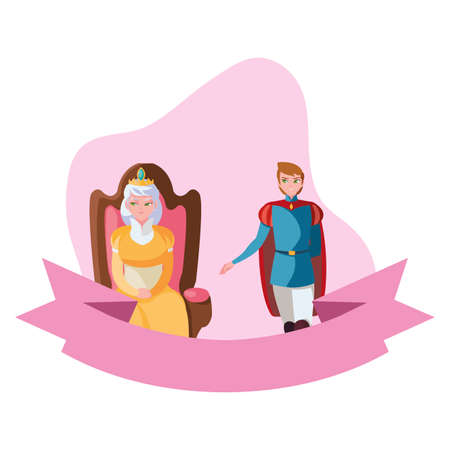1. Introduction: Unveiling the Interplay of Tradition and Health
In the vibrant tapestry of Indian society, tradition and modernity often collide, shaping the lived experiences of millions. Two persistent issues—child marriage and domestic violence—are deeply interwoven into the social fabric, influenced by longstanding cultural norms, religious beliefs, and patriarchal values. Despite significant legal progress, India remains home to one of the world’s highest rates of child marriage, with many girls married before their 18th birthday. Domestic violence, too, is widespread and frequently normalized within families and communities. These practices are not just violations of human rights but also catalysts for a range of mental health challenges. To truly understand the scale and impact of these issues, it is vital to examine how tradition perpetuates cycles of harm, influencing individual well-being and community health at large. This article explores the prevalence of child marriage and domestic violence in India, delving into their roots in cultural beliefs and setting the stage for a deeper discussion on their profound effects on mental health.
2. Child Marriage in Indian Society: Cultural Roots and Contemporary Reality
Child marriage continues to be a persistent issue in India, deeply woven into the social fabric and influenced by centuries-old traditions and economic realities. This practice, known locally as “Bal Vivah,” is not uniform across the nation; its prevalence varies significantly from state to state, with rural regions of Rajasthan, Bihar, Uttar Pradesh, and West Bengal reporting higher incidences compared to metropolitan areas like Mumbai or Bangalore. The roots of child marriage can often be traced to cultural expectations and longstanding customs such as the “Kanyadaan” (the gifting away of the daughter) during Hindu marriages, where early marriage is sometimes seen as fulfilling a sacred duty.
Regional Variations in Child Marriage
| Region/State | Prevalence Rate (%) | Common Local Terms & Traditions |
|---|---|---|
| Rajasthan | 35 | Kanyadaan, Akha Teej weddings |
| Bihar | 40 | Daan Pratha, dowry concerns |
| West Bengal | 33 | Biyer Boyosh (marriageable age) |
| Karnataka | 22 | Sambandha system in certain communities |
Economic Factors Driving Early Marriages
Poverty remains a critical driver behind child marriage. Families facing financial hardship may view marrying off their daughters early as a way to reduce economic burden or avoid hefty dowries associated with later marriages. In many cases, parents believe that early marriage provides social security for their daughters, particularly in communities where womens safety is perceived as a concern.
Social Pressures and Gender Norms
The influence of social pressures cannot be underestimated. In conservative societies, upholding family honour (“izzat”) is paramount, and parents may feel compelled to arrange early marriages to prevent relationships deemed inappropriate or premarital romantic involvement. Community elders and extended kin networks often reinforce these decisions through communal gatherings called “panchayats” or “samaj meetings.” These gatherings typically pressure families to conform to accepted norms, making it challenging for individuals to resist such practices without facing ostracism.
The Interplay Between Tradition and Modernity
Despite legal prohibitions under the Prohibition of Child Marriage Act (PCMA), 2006, enforcement remains inconsistent due to local resistance and lack of awareness. The transition between tradition and modernity creates a complex environment where cultural beliefs often outweigh legal mandates. As India advances socio-economically, changing mindsets through education, awareness campaigns, and grassroots interventions becomes crucial in breaking the cycle of child marriage and mitigating its lasting impact on mental health and domestic well-being.

3. Domestic Violence: Beyond the Four Walls
Domestic violence in India is a grave social concern that often extends beyond the private confines of homes, affecting women and children across diverse socio-economic backgrounds. This violence manifests in multiple forms—physical, emotional, and economic—each deeply rooted in Indias unique cultural and traditional landscape. Physical abuse remains the most visible form, with women and girls frequently bearing the brunt of beatings, forced confinement, and even severe injuries. Emotional abuse, though less visible, can be equally damaging, involving humiliation, constant criticism, isolation from family or friends, and threats that erode self-worth and mental well-being.
Economic abuse is another significant yet often overlooked aspect. Many Indian women are denied access to household finances, prevented from working outside the home, or forced to hand over their earnings. This form of control not only limits their independence but also reinforces cycles of dependency and vulnerability. In some communities, domestic violence is perpetuated by societal norms that view the husband as the primary authority within the family, while women are expected to remain silent about abuse for the sake of family honour or izzat.
The impact on children is profound; witnessing violence at home can lead to long-term psychological trauma, disrupted education, and the perpetuation of gender-based stereotypes. Children may internalise these patterns as normal behaviour, increasing their risk of either becoming future victims or perpetrators. In rural areas and urban slums alike, reporting domestic violence is complicated by stigma, lack of awareness about legal rights, and fear of social ostracisation.
Understanding domestic violence in India thus requires a nuanced perspective that recognises its deep entanglement with patriarchal values and community practices. Addressing this issue demands both legal intervention and grassroots efforts to shift mindsets—empowering women through education, economic opportunities, and community support systems tailored to Indias diverse cultural realities.
4. Mental Health Ramifications: Breaking the Silence
In India, the mental health impact of child marriage and domestic violence is profound but often remains unspoken due to cultural stigma and lack of awareness. Survivors, especially young girls, are at increased risk of developing psychological conditions such as depression, anxiety, and post-traumatic stress disorder (PTSD). The enduring trauma from forced marriages and ongoing abuse can disrupt their emotional development and well-being for years.
Mental Health Conditions Linked to Child Marriage & Domestic Violence
| Mental Health Condition | Common Symptoms | Barriers to Seeking Help in India |
|---|---|---|
| Depression | Persistent sadness, loss of interest, fatigue | Stigma, lack of family support, limited resources |
| Anxiety Disorders | Constant worry, fearfulness, sleep problems | Cultural taboos, social isolation, financial dependency |
| PTSD | Flashbacks, nightmares, emotional numbness | Fear of social ostracism, lack of trained professionals |
The Role of Local Attitudes toward Mental Health
Mental health is often misunderstood or ignored in many Indian communities. There is a widespread belief that psychological distress is a sign of personal weakness or even possession by evil spirits. These misconceptions lead families to hide mental health issues rather than seek professional help. Women and girls facing abuse are frequently told to endure silently for the sake of family honor (izzat) or marital stability.
Barriers to Accessing Mental Health Support
- Social Stigma: Fear of being labeled as “mad” or “unstable” discourages open discussion about mental health.
- Lack of Awareness: Many are unaware that conditions like depression or PTSD are treatable medical issues.
- Resource Constraints: In rural areas especially, there is a shortage of mental health professionals and affordable services.
- Gender Dynamics: Patriarchal norms restrict women’s autonomy and decision-making regarding their health.
Toward Healing: Need for Compassionate Support Systems
Breaking the silence around mental health requires culturally sensitive education and accessible care. Community-based interventions that include local leaders, NGOs, and schools can help reduce stigma and encourage families to support survivors. Empowering women and young girls with knowledge about mental health—and making support services available—are crucial steps towards healing and resilience in the face of child marriage and domestic violence.
5. Nutritional and Holistic Support: An Integrative Approach
For survivors of child marriage and domestic violence in India, mental health recovery goes beyond counseling and medical care; it is deeply intertwined with nutrition, traditional wellness practices, and community support. The Indian diet, rich in whole grains, pulses, fresh fruits, vegetables, and healing spices like turmeric and cumin, provides essential nutrients that support brain function and emotional balance. Incorporating these foods into daily meals can help restore physical health depleted by trauma.
The Role of Ayurveda in Emotional Healing
Ayurveda, Indias ancient system of medicine, offers time-tested approaches for balancing mind and body. Simple practices such as consuming warm herbal teas (like tulsi or ashwagandha), practicing abhyanga (self-massage with oils), and following dinacharya (daily routines) can calm anxiety and promote resilience. These holistic rituals are easily adaptable within families and communities, helping survivors reconnect with their cultural roots while fostering inner strength.
Community Kitchens and Support Networks
In many parts of India, community kitchens (langars or annadana programs) play a crucial role in supporting those affected by domestic challenges. Sharing nutritious meals together not only addresses hunger but also builds a sense of belonging—a critical factor for mental wellbeing. Community-based wellness workshops that blend nutritional education with stress-relief techniques empower survivors to make informed choices for their bodies and minds.
Towards Sustainable Recovery
An integrative approach—combining traditional Indian nutrition, Ayurveda, and grassroots community initiatives—forms the backbone of sustainable mental health recovery among survivors of child marriage and domestic violence. By honoring indigenous knowledge systems alongside modern therapeutic interventions, families and communities can nurture hope, resilience, and lasting change.
6. Pathways to Prevention and Empowerment
Combating child marriage and domestic violence in India requires a multi-pronged approach rooted in local realities and cultural context. Community-driven solutions, supported by government schemes and NGO interventions, are proving to be effective pathways toward prevention and empowerment—while also addressing the mental health repercussions of these social issues.
Community-Driven Solutions
Grassroots involvement is essential for change. In many Indian villages, Mahila Mandals (women’s groups) and youth collectives play pivotal roles in spreading awareness about the harms of child marriage and domestic violence. By fostering safe spaces for open dialogue, these community groups empower girls and women to voice their concerns, seek help, and access resources.
Education as a Tool of Transformation
Education is one of the most powerful tools in breaking the cycle of child marriage and domestic violence. When girls remain in school, they gain knowledge, confidence, and life skills that enable them to make informed decisions about their futures. Campaigns promoting girls’ education—such as the “Beti Bachao Beti Padhao” (Save the Daughter, Educate the Daughter) scheme—have led to increased school enrolment rates among girls in states like Haryana and Rajasthan, where child marriage was once rampant.
Government Schemes Making a Difference
The Government of India has implemented several landmark schemes aimed at protecting girls and supporting families. Beti Bachao Beti Padhao not only promotes education but also challenges deep-rooted gender biases through community mobilization. Additionally, schemes like Sukanya Samriddhi Yojana encourage parents to invest in their daughters’ futures rather than marrying them off early. Legal frameworks such as the Prohibition of Child Marriage Act (2006) further reinforce these efforts by providing protection and legal recourse.
NGO Interventions: Bridging Gaps
Numerous NGOs across India have stepped up to offer critical support services. Organizations like Breakthrough, Childline India Foundation, and Snehalaya conduct outreach programs in urban slums and remote villages alike. Their interventions range from rescue operations for at-risk children to mental health counselling, legal aid, and vocational training for survivors.
Mental Health Support: An Emerging Priority
The psychological impact of child marriage and domestic violence is now being recognized as a significant concern. Both government agencies and NGOs are increasingly integrating mental health services into their response strategies—offering counselling hotlines, helplines in regional languages, and peer support groups that help survivors heal emotionally while rebuilding their lives.
Towards an Empowered Future
The collective efforts of communities, educators, government bodies, and non-profits are creating positive ripples across India. Sustained commitment to these pathways ensures that young girls can aspire to a future free from fear—where they can thrive academically, socially, and emotionally.
7. Conclusion: Fostering Hope and Resilience
As we reflect on the challenges of child marriage, domestic violence, and mental health issues in India, it is clear that these are deeply interconnected problems requiring urgent attention. The journey towards a safer and mentally healthier India begins with acknowledging the gravity of these concerns and taking collective responsibility for change.
Summarising Key Points
Child marriage continues to rob countless children—especially girls—of their childhood, education, and opportunities. Domestic violence, rooted in traditional power dynamics and social norms, affects millions of families, leaving lasting scars on survivors’ mental well-being. Both issues contribute significantly to the rising tide of mental health struggles across age groups, often perpetuated by silence and stigma.
The Importance of Social Change
Cultural transformation is essential. Ending harmful practices like child marriage and breaking the cycle of domestic violence require us to challenge entrenched beliefs and prioritise gender equality. Community leaders, faith-based organisations, and local influencers play a crucial role in shifting mindsets at the grassroots level.
Collaboration for Impact
No single entity can tackle these issues alone. Government agencies must strengthen laws and enforcement mechanisms while NGOs and civil society groups provide vital support services and awareness campaigns. Schools, healthcare workers, and social workers should collaborate to create safe spaces for children and women to share their experiences without fear.
Strengthening Support Systems
Access to counselling, helplines, legal aid, and rehabilitation must be expanded—especially in rural areas where resources are scarce. Building robust support networks empowers survivors to rebuild their lives and inspires others to speak out. Educational initiatives promoting life skills, emotional intelligence, and self-confidence can further foster resilience among young people.
Together Towards a Healthier Future
A mentally healthy India is within reach if we work hand-in-hand—breaking the silence, supporting one another, and nurturing hope. By investing in prevention, protection, and mental well-being today, we pave the way for future generations to thrive with dignity, respect, and happiness.

